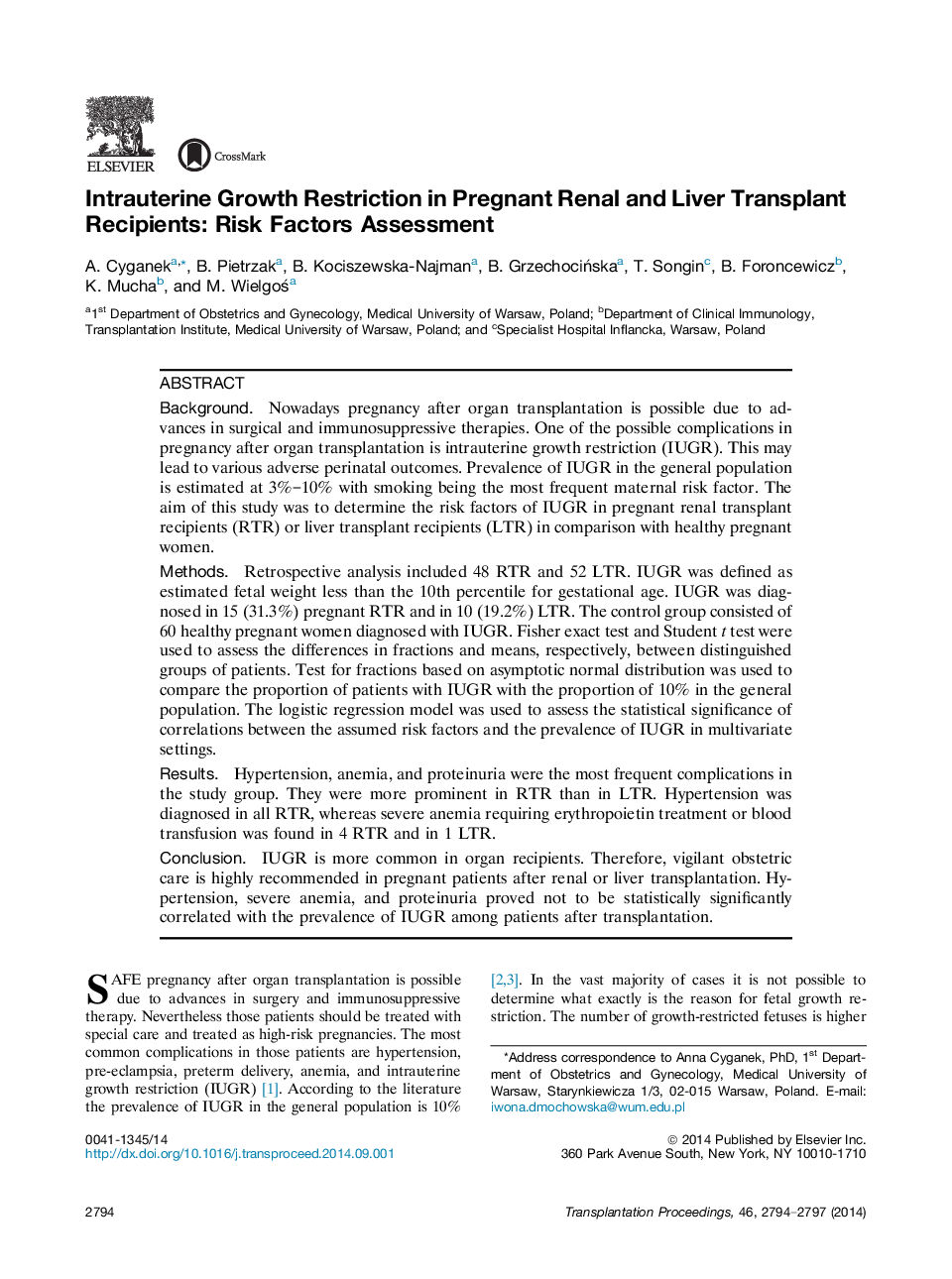| Article ID | Journal | Published Year | Pages | File Type |
|---|---|---|---|---|
| 4257988 | Transplantation Proceedings | 2014 | 4 Pages |
BackgroundNowadays pregnancy after organ transplantation is possible due to advances in surgical and immunosuppressive therapies. One of the possible complications in pregnancy after organ transplantation is intrauterine growth restriction (IUGR). This may lead to various adverse perinatal outcomes. Prevalence of IUGR in the general population is estimated at 3%–10% with smoking being the most frequent maternal risk factor. The aim of this study was to determine the risk factors of IUGR in pregnant renal transplant recipients (RTR) or liver transplant recipients (LTR) in comparison with healthy pregnant women.MethodsRetrospective analysis included 48 RTR and 52 LTR. IUGR was defined as estimated fetal weight less than the 10th percentile for gestational age. IUGR was diagnosed in 15 (31.3%) pregnant RTR and in 10 (19.2%) LTR. The control group consisted of 60 healthy pregnant women diagnosed with IUGR. Fisher exact test and Student t test were used to assess the differences in fractions and means, respectively, between distinguished groups of patients. Test for fractions based on asymptotic normal distribution was used to compare the proportion of patients with IUGR with the proportion of 10% in the general population. The logistic regression model was used to assess the statistical significance of correlations between the assumed risk factors and the prevalence of IUGR in multivariate settings.ResultsHypertension, anemia, and proteinuria were the most frequent complications in the study group. They were more prominent in RTR than in LTR. Hypertension was diagnosed in all RTR, whereas severe anemia requiring erythropoietin treatment or blood transfusion was found in 4 RTR and in 1 LTR.ConclusionIUGR is more common in organ recipients. Therefore, vigilant obstetric care is highly recommended in pregnant patients after renal or liver transplantation. Hypertension, severe anemia, and proteinuria proved not to be statistically significantly correlated with the prevalence of IUGR among patients after transplantation.
